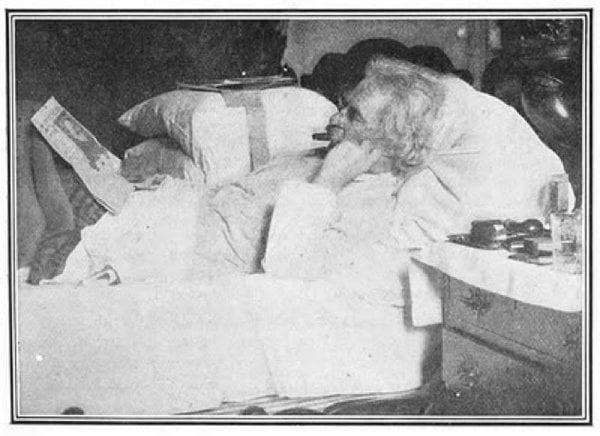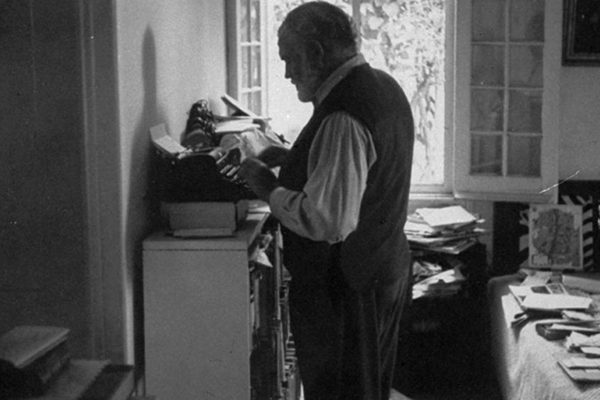Every writer is in constant search of a solid strategy for their personal daily battle with the blank page. This doesn’t only happen to newbies, it even happens to the literary icons we adore. Excellent wordsmiths have to wait for their best and motivated self before they can produce deep and thought-provoking novels and stories. Along with their drive to work in the ways that best suit them, famous writers’ own strange writing rituals also bring meaning to their creations.
Aside from innate skills and intelligence, the greatest geniuses share their potential with the world by possessing remarkable eagerness and a strong passion towards their craft. But believe it or not, most famous writers have also adopted bizarre habits in an attempt to scribble their words down on paper. Many successful authors were able to distinguish themselves from the rest of the pack because of these quirky secrets. Take a look at some of the routines of these eccentrics that may help you simplify your own writing process.
1. Lying down
For some authors, lying down seems to set their creativity and focus in writing. They find inspiration and the right words to write while they are in the comfort of their bed. Among the successful novelists who have practiced this habit are Mark Twain, George Orwell, Edith Wharton, Woody Allen and Marcel Proust. They were all known for churning out pages while lying in bed or lounged on a sofa. American author and playwright Truman Capote even claimed to be a “completely horizontal author” because he couldn’t think and write unless he was lying down.
2. Standing up
In contrast to point 1, writing vertically is also not peculiar for famous writers of critically acclaimed novels and motivational speeches: writers like Hemingway, Charles Dickens, Virginia Woolf, Lewis Carroll, and Philip Roth. These great thinkers have been inspired to pen their finest pieces at their standing desk. For health-conscious writers, this technique might work for you because standing desks offer many proven benefits.
3. Writing with index cards
Vladimir Nabokov, author of Lolita, Pale Fire, and Ada, was very particular about his writing instruments. He composed all his works on index cards, which he kept in slim boxes. This odd method enabled him to write scenes non-sequentially and re-order the cards any time he wanted.
Nabokov also stored some of his lined Bristol cards underneath his pillow. This way, if an idea popped into his head, he could quickly write it down. You can use index cards when doing your note-taking or plotting too. It’s a different way to construct your story that can knock fun things loose.
4. Using a color-coded system
French author Alexandre Dumas wrote his historical adventure novels like The Three Musketeers and The Count of Monte Cristo using a color-coded system of writing. It may be hard to imagine, but this genius was actually very specific on the palettes of colors for his works. Interesting, right? For decades, Dumas used various colors to indicate his type of writing. Blue was the color for his fiction novels, pink for non-fiction or articles and yellow for poetry. Why not try applying different colors to your content creation and see if it can help you express yourself in print.
5. Hanging upside down
Hanging upside down is the cure for writer’s block; at least, this is what the renowned bestselling author Dan Brown believes. According to Brown, when he does so-called inversion therapy, it helps him relax and concentrate better on his writing. The more he does it, the more he feels relieved and inspired to write.
Another unusual habit of the Da Vinci Code writer is having an hourglass on his desk. Every hour he sets aside his manuscript to do some push-ups, sit-ups and stretches. Imitating such weird tactics doesn’t seem like a bad idea at all. If it helps you to write, why not give it a try, right? At the very least, you’ll stay fit!
6. Facing a wall
Francine Prose, the author of Blue Angel, believes that writing while facing a wall is the perfect metaphor for being a writer. When working in a strange apartment, Prose’s solution for limiting distraction was moving her desk to face the window and looking out on a high brick wall. She found this view monotonous but it helped her to sit and write for long stretches of time.
7. Acting out dialogues
The award-winning screenwriter behind The West Wing and The Social Network, Aaron Sorkin, confessed that he broke his nose while writing. How did it happen? Well, he likes to act out his stories’ dialogues in front of the mirror, and once, after getting carried away, he accidentally head butted it. Acting out your story dialogues is good, but make sure that you don’t step over the line and get yourself hurt when you’re structuring your story.
8. Writing without clothes
To complete your writing before a deadline, you may possibly consider Victor Hugo’s weird habit — writing without clothes. When he was facing a tight schedule for his novel The Hunchback of Notre Dame, he instructed his valet to confiscate all his clothes so he wouldn’t able to leave the house. Even during the coldest days, Hugo only wrapped himself in a blanket while he penned his story.
9. Drinking massive amounts of coffee
French novelist Honoré de Balzac fueled his creative writing by consuming around 50 cups of coffee a day. Yes, that’s the amount of coffee he drank every day just to find inspiration for his written works. Some studies say that Balzac barely slept when he wrote his magnum opus, La Comedie Humaine. Besides de Balzac, another coffee-addicted author was Voltaire. He was known for drinking up to 40 cups of coffee a day.
Featured photo credit: the author/streetwrk.com via flickr.com





















































